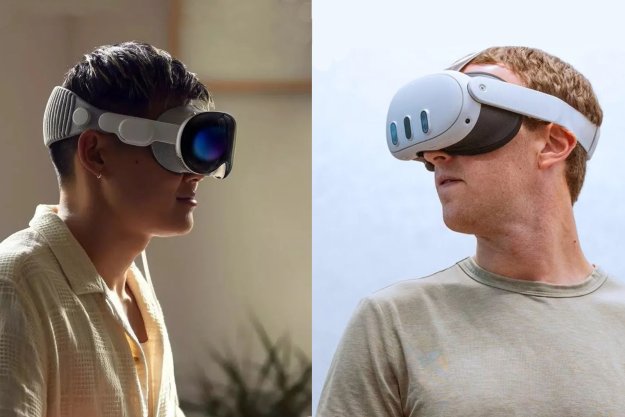A durability test performed on Apple’s new Vision Pro headset revealed many things we weren’t expecting.
In an admittedly unscientific test, tech YouTuber AppleTrack strapped the new Vision Pro mixed-reality device to his head and spent some time walking into walls and doors to see how the glass front on Apple’s newest device held up. He also dropped the headset from a great height to see if it stayed intact or shattered into a thousand tiny pieces. It did neither, but more on that later.
At the start of his video, AppleTrack’s Sam Kohl offers some very important advice for anyone forking out a hefty $3,499 for Apple’s new Vision Pro headset. And that is: Avoid picking up the headset by the light seal. It turns out that the magnetic connection between the seal and the main device is not that strong, and it easily comes away if you pick up the headset only by the seal. Such a mishap could see your pricey headset crash to the floor, risking damage to your brand-new Vision Pro.
For the durability test, Kohl plonks the Vision Pro on his head and spends around 40 minutes walking into things. Of course, few people are this clumsy, so it’s an unreal exercise — Kohl simply wanted to knock it against various surfaces with the weight of his head behind it to see how the glass and the rest of the device held up. Despite all the knocks and bumps, the glass remained in excellent condition, with only a few minor scuffs appearing.
During the test, it becomes apparent that in pass-through mode, where the real world is visible through the headset, the Vision Pro doesn’t offer a “move back” warning notification if you come too close to an object. Such notifications only appear when you’re in the immersive mode in a virtual environment, though even then, Kohl found that such alerts can be slow to show up.
Keen to bash it a bit harder but reluctant to suffer a concussion for the sake of his craft, Kohl takes off the headset and smacks it against the wall with greater force than before. More scratches appear, but overall, the glass continues to remain intact.
A drop test from head height again does little to trouble the glass, but Kohl then tries out the device for the first time since the start of the test and discovers that the left speaker no longer works. He also spots a small crack in the band around the right hinge about an inch back from the glass. “I was not expecting that to be the part of Vision Pro that goes first,” Kohl comments. The same crack appears on the other side a short while later.
Finally, the YouTuber drops the Vision Pro from way above his head, a distance that causes the glass to shatter finally, though it still holds together. As he peels off the broken glass, Kohl is delighted to discover that the device continues to work as normal. His camera operator even suggests that the EyeSight digital representation of the wearer’s eyes — a feature that has come in for criticism for its questionable quality — on the now glass-free Vision Pro screen “may even look a little bit better.”
No, we’re not suggesting you go and whip the glass off your Vision Pro for a better EyeSight experience, but it’s perhaps reassuring to know that if you do end up with a cracked screen and you don’t have AppleCare Plus to cover the damage, then you don’t necessarily have to drop $799 on new glass.
Editors' Recommendations
- The Vision Pro is already in trouble. Here’s how Apple can turn the tide
- How to try out the Vision Pro headset yourself
- Vision Pro 2: everything we expect from the future of Apple’s headsets
- Apple’s next Pencil may work with the Vision Pro headset
- Does the Apple Vision Pro come with a battery?


